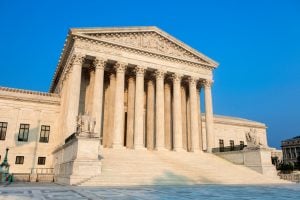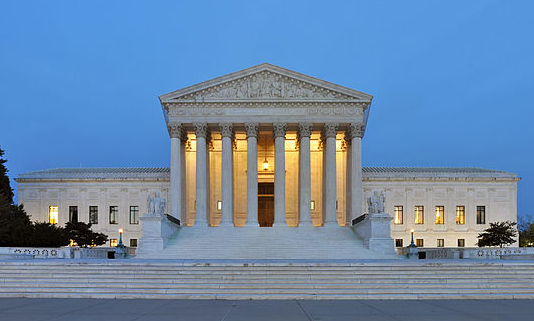When Zimbabwe’s president unveiled Kumbirai Hodzi as the country’s new Prosecutor General (PG) in January, it came as a surprise to many. This was because Hodzi had placed a distant sixth in the mandatory public interviews to choose a head of public prosecutions two months previously. This vacancy had arisen following the forced resignation of the previous head after only eight months in office.
But to those who have followed Zimbabwe’s recent judicial hiring, Hodzi’s appointment – which is now the subject of a court challenge – wasn’t completely unexpected, as it followed a predictable pattern in which those who score the highest marks in public interviews are simply disqualified from the running.
President Emmerson Mnangagwa has so far appointed eight judges, including a member of the ruling ZANU-PF party, from among a pool of borderline lawyers, including candidates that openly admitted they had never been in a court of law in their professional lives, or could not tell the difference between elementary court procedures such as a court application and a court action.
The same also applied when he appointed two judges to the Supreme Court in May last year. The candidates that came top in the public interviews were ignored as the promotions went to those that had performed dismally. For example, Justice Francis Bere, one of the judges promoted to the Supreme Court, had nearly half (43 percent) of his judgments set aside after being found to be unsound during Supreme Court appeal hearings. In comparison, one of the losers, Justice Nicholas Mathonsi, had handed down a record 333 judgments in three years, of which only 22 were appealed against with 21 upheld by the Supreme Court as correct while the remaining one was overturned on account of the judge’s harshness on a litigant whose papers were not in order.
A new Constitution, which came into effect in 2013, requires the Judicial Services Commission (JSC) to interview candidates for all senior judicial appointments publicly. The Constitution says the president can only take his pick from among the top three candidates, but in all these cases, Mnangagwa went out of his way to appoint those that had performed poorly.
Zimbabwe’s new leader, who is proving no better than Robert Mugabe, who he replaced, is not leaving anything to chance as he consolidates his stranglehold on power. He is seen to be packing the bench and other key judicial positions with his cronies while sidelining and or simply moving independent-minded judicial officers out of the way.
It is developments like these that resulted in the country’s lawyers staging a protest earlier this year to demand that the country returns to the rule of law. The lawyers strongly feel that judges only come to court to read decisions made elsewhere.
In mid-May prosecutors also went on strike protesting against what they see as an attack on their independence by the president, who has since set up a parallel special prosecution unit in his office.
Mnangagwa is a long-time former justice minister and most judicial officers were his subordinates until he became president in 2017. Aside from use of violence and brute force, there are more polished methods of controlling a country, and micromanaging the judiciary and all legal processes is certainly one of them. This is what Mnangagwa’s opponents see him doing.
The former PG, Ray Goba, resigned in August last year after a slew of allegations were raised against him, primarily his alleged failure to prosecute “high profile graft cases”. In reality, these cases exclusively involve members of a faction of the ruling ZANU-PF party that remained steadfastly loyal to Mugabe after he was toppled in the November 2007 coup.
For resisting playing a role in this persecution-by-prosecution campaign, Goba was suspended and an investigation into his continued suitability for the post was instituted. This resulted in him resigning.
Both Mnangagwa and current Justice Minister Ziyambi Ziyambi, along with several other top officials, had been expelled from both the government and the ruling ZANU-PF party by the time Mugabe was toppled and are seen to have unfinished business with those that sided with Mugabe in his last days.
“He [Goba] refused to be used to settle scores with those that fell together with Mugabe, so for that, he was targeted and he saw that he could not stand, so he resigned,” a former judge told TRT World.
During the public interviews, Hodzi – who was Acting Prosecutor General – surprised the interviewing panel when he revealed that the National Prosecuting Authority (NPA), which is already fully packed with officers seconded from the army, took orders from the executive on who to prosecute.
The setting up of a special anti-corruption unit in the president’s office has raised eyebrows within the legal fraternity.
Alex Magaisa, a UK-based law lecturer, says the move by Mnangagwa to set up an anti-crime department in his office is a clear violation of the constitution as it usurps the duties of the Zimbabwe Anti-Corruption Commission (ZACC) and the NPA.
“Having diagnosed the problem [of corruption], it is important for Mnangagwa to find the correct solution within the confines of the law. That solution must, therefore, be based on a solid legal foundation. It must be consistent with constitutionalism and the rule of law. It must not undermine the constitution and established constitutional principles and values,” Magaisa said.
He added that in the absence of specific legal authority, “it can be concluded that the special unit has been established by presidential decree, itself a hallmark of arbitrary rule”.
Veritas, a legal and legislative watchdog, also concluded that prosecutors were right in refusing to take orders from the unit in Mnangagwa’s office.
“It seems that the prosecutors are protesting against instructions being given to them by a Special Anti-Corruption Unit, not by the Prosecutor-General and his deputies in the NPA,” Veritas pointed in its weekly legal commentary.
“So if the Unit is a separate body independent of the NPA, then prosecutors can legitimately object to being given instructions by it ‒ indeed they ought to do so because the Constitution says they should take instructions only from the Prosecutor-General,” it added.
Mnangagwa, who for a long time headed a faction that was seen as preparing to take over power from an aged Mugabe, used his position as the country’s justice minister to fill up the judiciary with individuals loyal to him, even it meant they were not the best candidates.
“He personally interviewed most of the judges when he was still justice minister before recommending them to Mugabe for appointment to the bench, so most of them are very loyal to him since he personally invited them to the bench,” a senior lawyer that politely turned down one such invitation told TRT World.
“Suggestions that Mnangagwa is a ‘legally illiterate lawyer’ are wrong. He is a very astute lawyer, who chooses to do the wrong things when it best suits him,” added the lawyer who requested anonymity for fear of victimisation.
Mnangagwa himself has in the past boasted about how he was the legal brain behind Mugabe’s 2008 comeback after an electoral defeat at the hands of the late opposition leader Morgan Tsvangirai.
A few days before the new constitution came into effect in 2013, Mugabe – on the advice of Mnangagwa – hurriedly appointed six judges to the High Court and another one to the Supreme Court before the clause that require a cumbersome appointment process took effect. A few other loyalists were smuggled on to the bench in 2015 when Mugabe appointed nine judges under the new arrangement that requires the JSC to conduct public interviews for all senior judicial posts.
The appointment of a new Chief Justice in 2017 caused a huge legal uproarafter Mnangagwa unsuccessfully tried to push a candidate of his own choice, current Judge President (head of the High Court) George Chiweshe, to the pinnacle of the country’s judiciary.
The war veteran Judge President (Chiweshe) is a former military judge who continued to get promotions in the army even when he was serving in the judiciary. During the liberation war, in which most relationships were cemented, Chiweshe – under nom de guerre ’Yasser Arafat’ – deputised now Vice President Constantino Chiwenga, the general who led the coup that toppled Mugabe. The controversial judge presided over the 2008 elections fiasco, when he withheld presidential election results for a record five weeks after Mugabe had lost, until Mnangagwa had worked out a legal comeback route for the embattled ruler.
Chiweshe is also one of the two judges that passed judgements which served to sanitise the coup that toppled Mugabe. The other one was Justice Charles Hungwe, also a war veteran, who was the founding chairperson of the Zimbabwe National Liberation War Veterans Association in 1990.
After failing to get Chiweshe appointed Chief Justice, an unhappy Mnangagwa successfully pushed for a constitutional amendment to give the president powers to appoint a person of his choice to head the judiciary. The resulting amendment is being challenged before the Constitutional Court.
The amendment gives him power to handpick the Chief Justice, the Deputy Chief Justice and the Judge President when the current Chief Justice Luke Malaba reaches the fixed retirement age of 70 in 2021. This will be just in time for the 2023 elections.
Mnangagwa and his ZANU-PF appear to have carefully studied Justice Enjoined, a report published by the Robert F. Kennedy Memorial Centre for Human Rights in 1992 on the sorry state of the judiciary in Kenya, and adopted – warts and all – the strategy of former president Daniel arap Moi and his KANU party in their final years in power. It was a strategy that gave Kenya a travesty of a judiciary, which existed primarily to serve the political and economic interests of the executive and the ruling elite.
Post published in: Featured





















